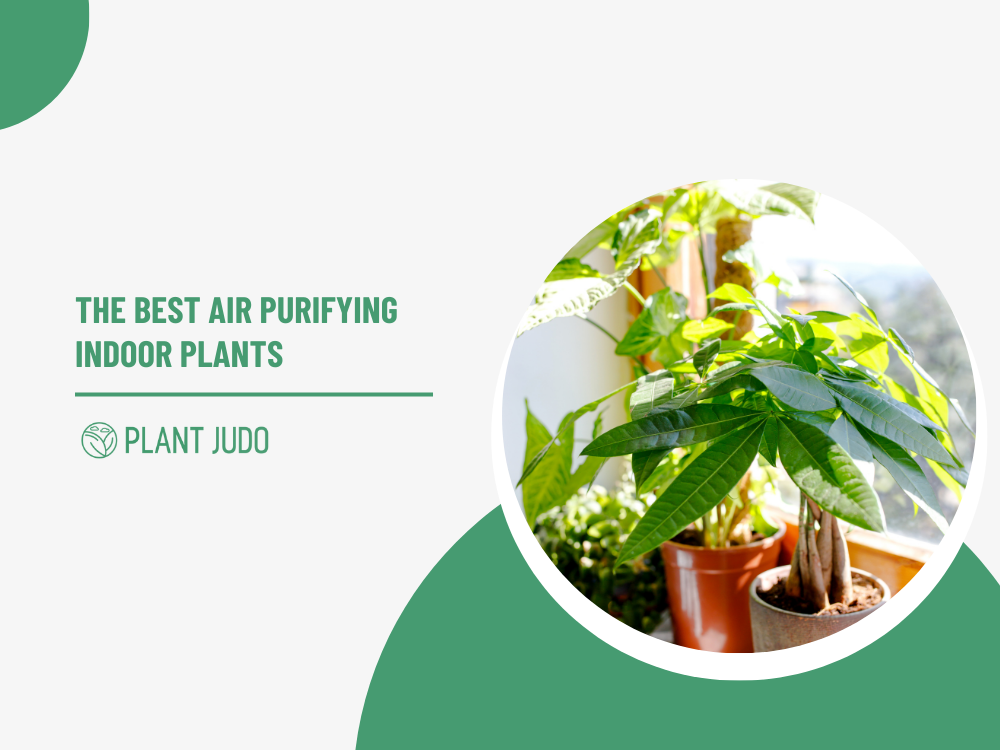In terms of our health, well-being is a top priority, and the quality of the air around us can have a significant impact. Although some might say they can easily solve this by using air purifiers – air-purifying plants are also a great way to boost the cleaning process and revamp your space at the same time.
The air we breathe isn’t always pure – the presence of airborne toxins, germs, and dust is everywhere- from household cleaning products to the fabrics of your couch to the more obvious culprits such as roadside pollution. Many air-purifying plants can naturally filter out toxins for you, but this can become a cause for concern over time.
To make a real difference to the air, you would need a significant number of indoor plants at home, according to NASA’s Clean Air Study. In any case, house plants have been on-trend for years, so this shouldn’t be a problem.
Is it possible to purify your home with indoor plants?
As NASA released studies show that indoor plants could purify the air in the late 1980s, people lined their window sills with greenery in increasing numbers.
Back then, there seems to have been a bit of wishful thinking. It would take 680 plants in a 1,500-square-foot house to truly fight toxins with their foliage.
In addition to air-boosting benefits, indoor plants can provide health benefits as well. It may be possible to improve indoor air quality even with a modest amount of foliage. Why not make your living space more beautiful with some easy-to-care plants?
Air quality indoors is vital for several reasons.
The Environmental Protection Agency estimates that we spend about 90 percent of our time indoors, whether sleeping, watching Netflix, or working and that’s why are exposed to indoor air pollution when we spend so much time indoors.
The causes of indoor air pollution
- furnishings
- carpet
- upholstery
- dry-cleaned clothing
- paint
- synthetic building materials
- cleaning products
- pesticides
- bacteria
- mould
- outdoor pollution that enters
Your particle board coffee table emits gases, but you might not realise it. Formaldehyde is one of the aromatic organic compounds (VOCs) released by paint and upholstery on furniture in a house or office but it is not as commonly known..
A typical indoor VOC level is two to five times greater than an outdoor level. Indoor air pollution is likely not causing any problems for us, but we’re exposed to it all the time. There are some cases, however, where inadequate ventilation can cause sickness, especially for people with high sensitivity.
It is sometimes called “sick building syndrome” because it can cause headaches, nausea, and fatigue.
The Many Benefits of Indoor Plants
Indoor plants can:
- Ensure that eyes, ears, noses, and throats are less irritated
- Ensure that coughing and congestion are prevented or eased
- Reduce your stress
- Enhance your ability to pay attention
Plants that purify indoor air reduce CO2 levels and increase relative humidity. By exchanging stale air for fresh air, they act as natural humidifiers, preventing or easing irritation to the eyes, noses, throats, and even lungs.
People feel better when they are surrounded by foliage. It does more than improve air quality. It may be beneficial to interact with your indoor plants to reduce stress.
But you’re not obligated to talk to your aloe vera unless you want to. There would be no judgment from us. Air-purifying indoor plants can be replanted, pruned, or watered to improve their air quality.
When you’re working on a challenging task, like a paper for school or a report for work, that focus can help you stay focused simply by being in the room with you.
THE BEST AIR PURIFYING PLANTS
Although house plants can seem intimidating to those who lack a green thumb or who fear commitment, many are easy to take care of – so easy that it’d be hard to kill them.
Find out how much sunlight and water each type needs by reading the tag on the plant or searching online. We’ve compiled a list of plants that can practically withstand anything.
MONEY PLANT
The Chinese money plant has flat, green circular leaves that can grow up to 5in (15cm) across. Especially effective at reducing levels of harmful chemicals found in carpets, paints, glues, and artificial fabrics, they are one of the most effective indoor plants for air purification.
An unusual plant from the stinging nettle family, it grows up to 16 inches (40 cm) high and loves light, away from direct sunlight. In spring and summer, water when the soil is dry to the touch and feed with a liquid feed every month.
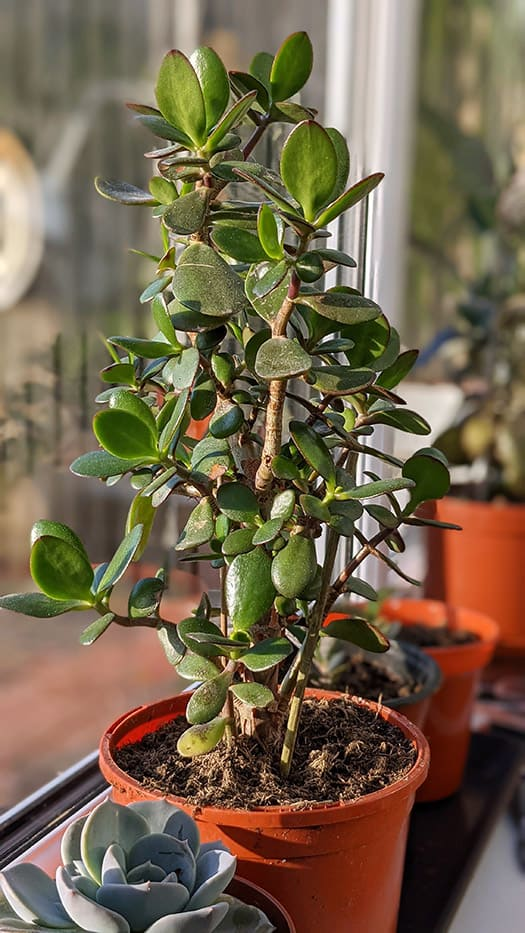
SPIDER PLANT
Plants that purify the air in the home are among the easiest to grow, so they are an excellent choice for beginners or sometimes forgetful owners. Spider plants produce baby spider plants (spiderettes) when they receive bright indirect light.
As long as the babies are attached to their mother plants, you can place them in their pot of soil. After they have rooted, you can snip them off. Make your space greener by giving them to friends or adding plants to your garden.
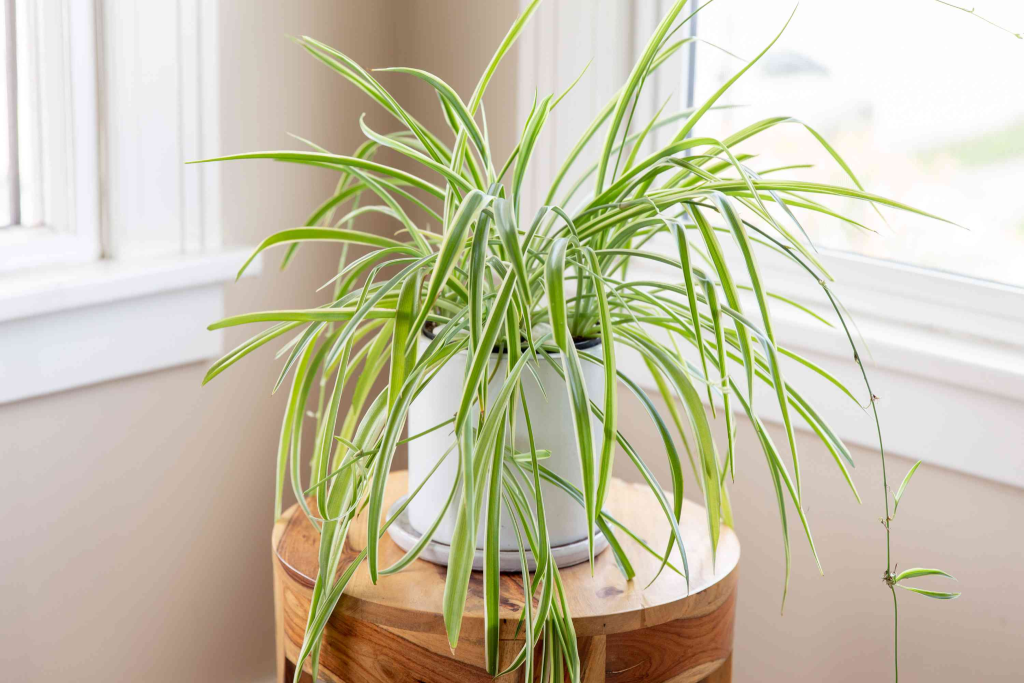
3. FLAMINGO LILY
The Flamingo Lily adds a pop of colour to your room and is an excellent air purifier for beginners and city dwellers alike. It has salmon-red leaves with a heart shape, and it’s excellent at purifying the air, as well.
Flamingo Lilies should be kept away from direct sunlight but close to bright areas and water it at least once or twice a week. Bathrooms and kitchens, which are humid places, also benefit from them.
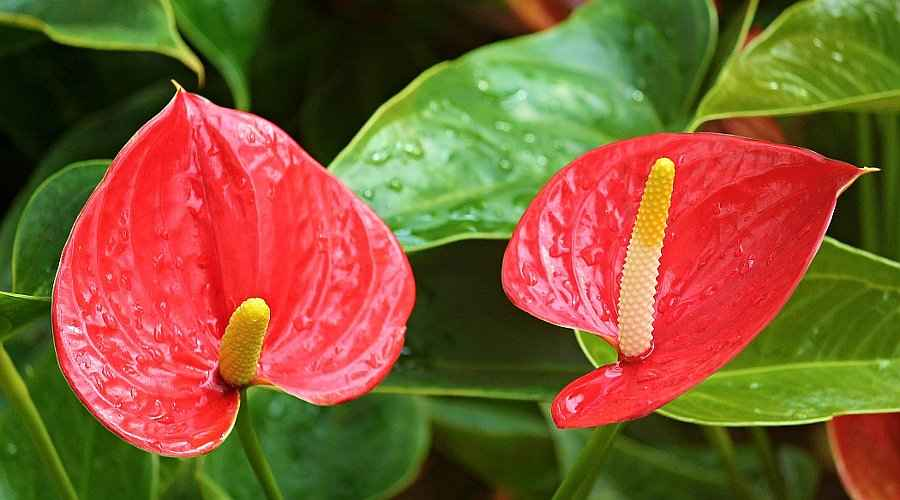
4. SNAKE PLANT OR MOTHER-IN-LAW’S TONGUE
A plant like this will provide you with a good night’s sleep in your bedroom. This yellow-tipped succulent, also known as Mother-in-Law’s Tongue, releases oxygen at night to help you sleep better. Formaldehyde, xylene, benzene, toluene, and trichloroethylene can be removed from the air by this plant.
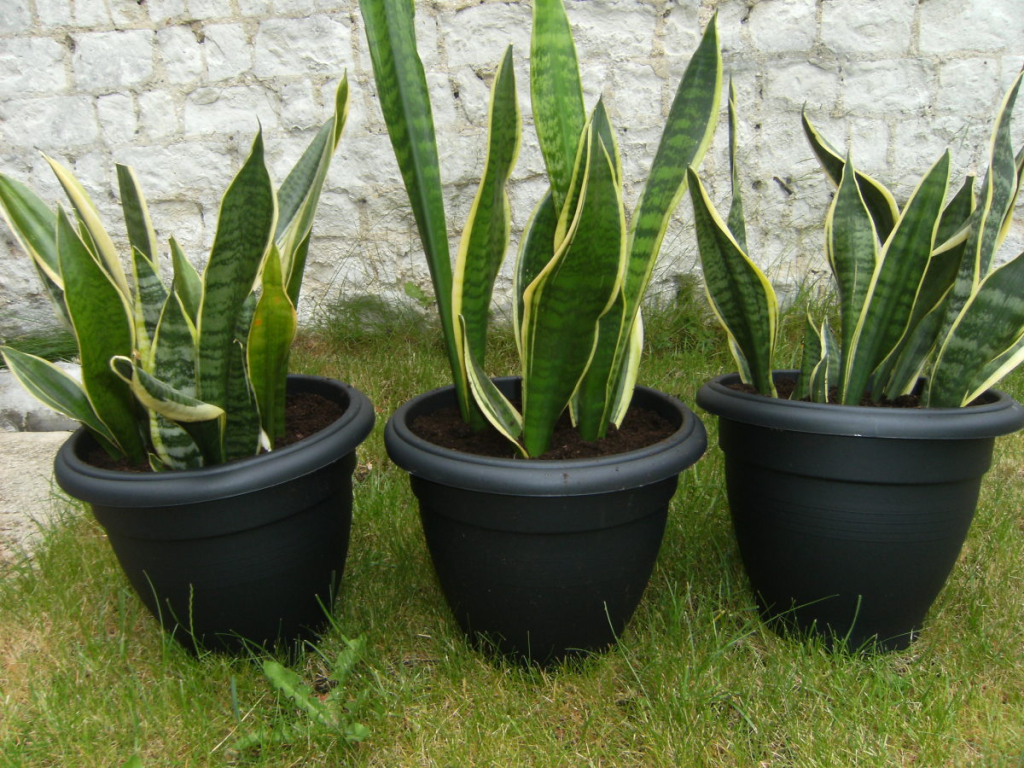
5. PEACE LILY
The peace lily plant is relatively small compared to many of the plants in this list, so it’s an ideal plant for smaller spaces. Make sure peace lilies are planted in a shady area and that they are kept moist without being overwatered. The summer months are filled with flowers on these easy-to-grow plants.
Despite their delicate appearance, peace lilies do contribute some pollen and floral scents to the air. If children or pets eat peace lilies, they can be poisonous.
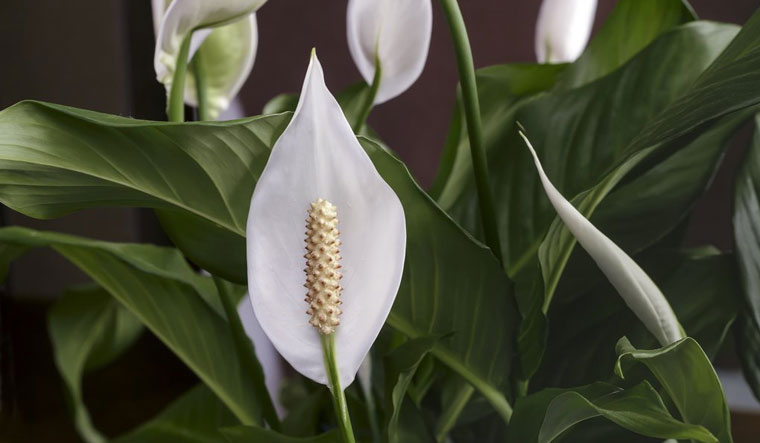
6. CHINESE EVERGREEN
Chinese evergreen is proven to be an effective cleanser of formaldehyde and benzene, found in detergents and cosmetics.
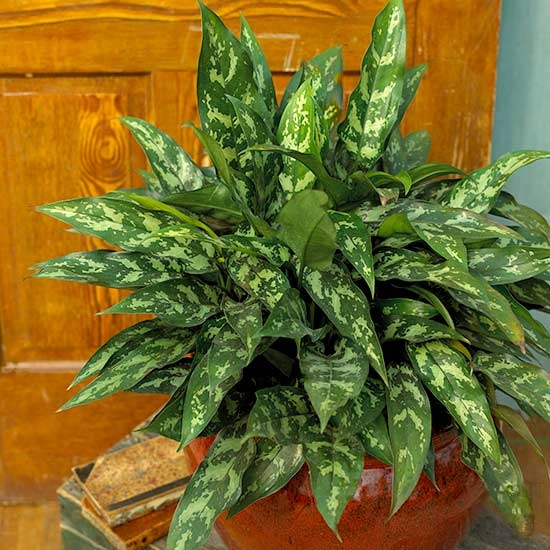
7. RUBBER PLANT (FICUS ELASTICA)
Thanks to its striking appearance, this hardy, low-maintenance houseplant is one of the most popular. NASA has recommended it as one of the best natural humidifiers for cleansing the air in a previous study and serves as aperfect decoration for a desk or window sill.
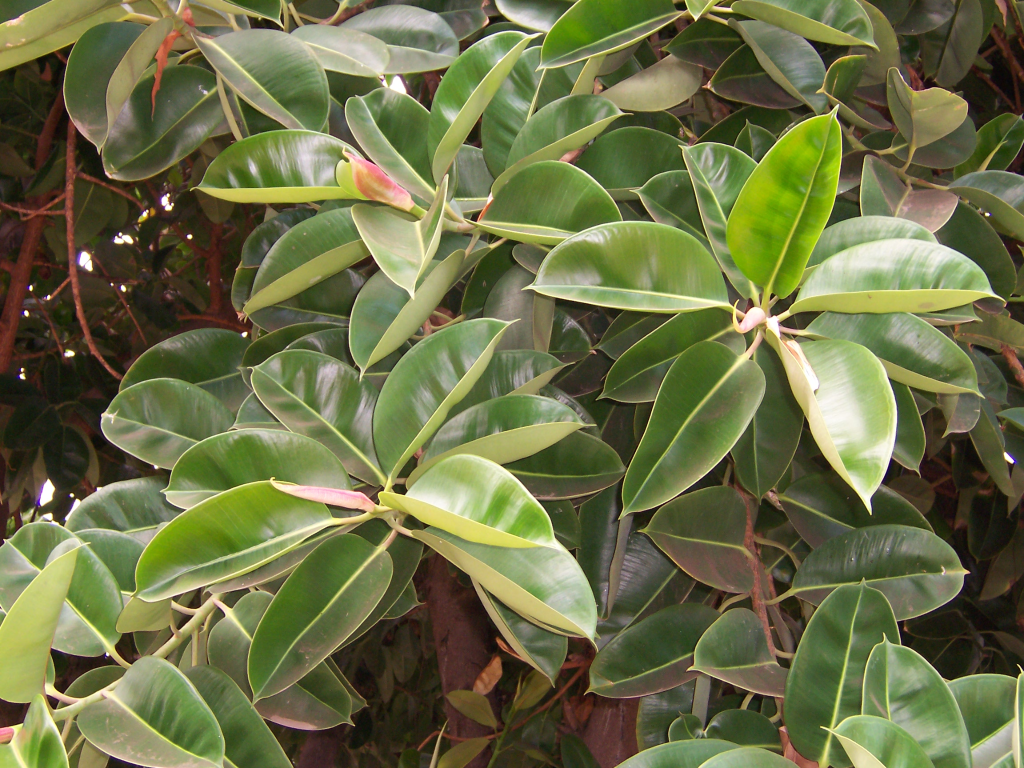
8. BAMBOO PALM (CHAMAEDOREA SEIFRIZII)
They can grow as tall as four to twelve feet, making them an absolute formaldehyde filtering machine. Pet-friendly, they are one of the few air cleaners that enjoy full sunlight and make great indoor additions.
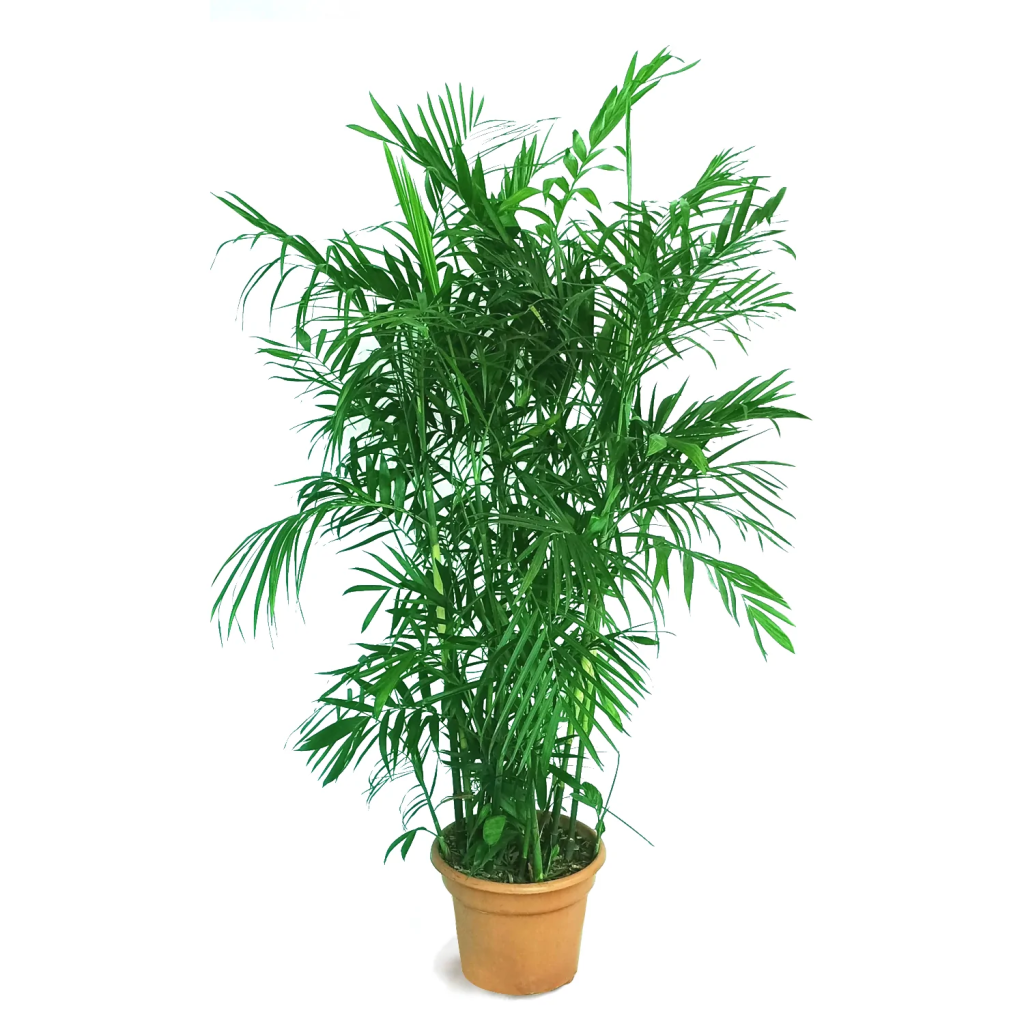
Conclusion
You can also purify the air in your home with other methods besides houseplants:
- Maintain a clean floor by regularly vacuuming and mopping.
- Air fresheners and synthetic cleaners should be avoided.
- Your air should be less humid.
- Ventilate more.
Air filters were also used in some studies in conjunction with plants. An air filter is an easy step to cleaner air if you are new to gardening or don’t have enough space.
FAQs
What is the best way to take care of an air purifying plant?
It is necessary to water outdoor plants like Tulsi and English Ivy regularly. Plants that purify the air outdoors, such as Aloe Vera and Areca Palm, need watering twice a week. You should water peace lilies and spider plants alternately and place them in good lighting.
If you want to improve the air quality in your home, how many plants do you need?
It would take around ten plants per square foot to reduce VOCs enough to make a noticeable difference in air quality. There are 5,000 plants in a 500-square-foot apartment, which is a veritable forest.
What are the benefits of houseplants?
Plants in the home not only enhance the appearance of a space but also boost moods, increase creativity, reduce stress, and eliminate air pollutants, making you healthier and happier. Plants make us feel good not only by looking good but also by looking good.
What are the health risks associated with indoor plants?
Many houseplants are beautiful, but some contain chemicals which can be harmful or even fatal. The skin can be irritated by poisonous houseplants, the stomach can be upset, and the throat and mouth can be burned.
When it comes to indoor plants, are they harmful at night?
Is it harmful to have indoor plants at night? Not at all. Despite many houseplant species releasing carbon dioxide rather than oxygen at night, the quantities are not often significant enough to cause breathing difficulties or worsen sleep apnea.

